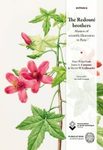![The Quest for the Invisible The Quest for the Invisible]()
Click to have a closer look
About this book
Contents
Customer reviews
Biography
Related titles
About this book
The eighteenth century has often been viewed as a period of relative decline in the field of microscopy, as interest in microscopes seemed to wane after an intense period of discovery in the seventeenth century. As such, developments in the field during the Enlightenment have been largely overlooked. The Quest for the Invisible therefore fills a considerable gap in the study of this life science, providing a thorough analysis of what the main concerns of the field were and how microscopists learned to communicate with each other in relevant ways in order to compare results and build a new discipline.
Employing a substantial body of contemporary literature from across Europe, Marc J. Ratcliff is able to present us with a definitive account of the state of research into microscopy of the period. He brings to light the little known work of Louis Joblot, re-evaluates the achievements of Abraham Trembley and gives new weight to Otto-Friedrich MA ller's important contributions. The Quest for the Invisible also connects changes in instrument design to an innovative account of microscopical research during the eighteenth century and the rich social networks of communication that grew during this period. Investigating the history of microscopical research from 1680 up to 1800 also shows how scholars progressively established a modern rule on which to shape their new discipline: balancing microscopical magnification with shared vision. This rule developed in response to the diminishing size of the microscopical object during the course of the eighteenth century, from dry minute organisms such as insects, to aquatic minute bodies such as polyps, and finally to aquatic invisible organisms, thus completing the scholar's quest to study the invisible. The Quest for the Invisible will be essential reading for historians of microscopy, epistemologists, and for historians of the life sciences in the modern period.
Contents
- Introduction: reasons for a new historiography
Part 1 The Definition of Good Microscopical Objects 1680-1740: Production and visibility of microscopes in the first half of the 18th century
- The study of animalcules at the turn of the 18th century
- Insects, hermaphrodite and ambiguity
Part 2 The Break with the Past 1740-1760s: Towards marketing strategies for the microscope in the second half of the 18th century
- Abraham Trembly, the polyp and new directions for microscopical research
- The disputes over authority and microscopical observations
Part 3 Infusoria and Microscopical Experiments: The True Invisible Objects 1760s-1800s: The quantifying spirit in microscopical research and 'keeping up' with invisible objects
- The emergence of the systematics of infusoria
- From spontaneous generation to the limits of life: the microscopical experimentalist research from the 1760s to 1800
- Conclusion
- Bibliography
- Indexes
Customer Reviews
Biography
Marc J. Ratcliff is based at the University of Geneva, Switzerland. In 2005 he won the History of Science Society Derek Price/Rod Webster Award for a paper on Abraham Trembley published in ISIS. He is currently working on twentieth-century psychology.














![Die Vogel-WG: Die Heinroths, ihre 1000 Vögel und die Anfänge der Verhaltensforschung [The Bird Wohngemeinschaft: The Heinroths, Their 1000 Birds and the Beginnings of Behavioral Research]](http://mediacdn.nhbs.com/jackets/jackets_resizer_medium/26/267983.jpg?height=150&width=107)



















